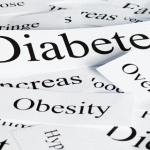 It’s not uncommon to have diabetes and yet have no symptoms.
It’s not uncommon to have diabetes and yet have no symptoms.
Type two diabetes in particular, develops slowly- over many years.
When symptoms do appear, they often vary. But two symptoms that occur in many people are increased thirst and frequent urunation.
This is caused by excess glucose circulating in the body draws water from the tissues, leaving a feeling of dehydration. So consumption of water and other fluids increase to quench this thirst, leading to increased urination. In general, warning signs include:
Flulike symptoms: Diabetes can sometimes feel like a viral illness, with fatigue, weakness and loss of appetite. Sugar is your body’s main fuel, and when it doesn’t reach your cells you may feel tired and weak
Weight gain or loss: Because your body is trying to compensate for lost fluids and sugar, you may eat more than usual and gain weight. But the opposite also can occur. You may eat more than normal, but still lose weight because your muscle tissues don’t get enough glucose to generate growth and energy. This is especially true if you have type 1 diabetes, where very little sugar gets into your cells. In fact, most people with type 1 diabetes are at or below their normal weight
Blurred vision: High levels of blood sugar pull fluid out of the tissues in your body — including the lenses of your eyes. This affects your ability to focus. Once your diabetes is treated and your blood sugar levels drop, your vision should improve.
Over a period of years, however, diabetes can also cause new blood vessels to form in your retina — the back part of your eye — as well as damage old vessels. For most people this causes only mild vision problems. But for others, the effects may be much more serious. In some cases, diabetes can lead to blindness
Slow-healing sores or frequent infections: Diabetes affects your body’s ability to heal and fight infection. Bladder and vaginal infections can be a particular problem for women
Nerve damage (neuropathy): Excess sugar in your blood can damage the blood vessels to your nerves, leading to a number of symptoms. The most common are tingling and loss of sensation in your hands and feet. You may also experience burning pain in your legs, feet, arms and hands. In addition, more than half of men age 50 and older with diabetes may experience some degree of sexual dysfunction from damage to the nerves that help produce an erection
Red, swollen, tender gums: Diabetes increases the risk of infection in your gums and in the bones that hold your teeth in place. As a result your gums may pull away from your teeth, your teeth may become loose, or you may develop sores or pockets of pus in your gums.
Those most at risk for getting Diabetes are African American, Native American/Alaska Native, Asian American, Hispanic American/Latino, and Native Hawaiian/Pacific Islander ethnic groups.
However, other things that can put you at higher risk for developing diabetes include:
- Being more than 20 percent above your ideal body weight
- Having a mother, father, brother, or sister with diabetes
- Giving birth to a baby weighing more than 9 pounds or having diabetes during pregnancy
- Having high blood pressure (140/90 or higher)
- Having abnormal blood lipid levels, such as low HDL (good) cholesterol (less than 35 milligrams per deciliter (mg/dL)), or high triglycerides (greater than 250 mg/dL)
- Having abnormal glucose tolerance in an earlier diabetes test.
The Benefits of Vedic Meditation to Manage and Prevent the Symptoms of Diabetes:
The regular practice of the Vedic Meditation technique creates a deep state of physiological rest which dissolves stress and allows the natural regeneration processes of the mind and body to restore balance to the system. As a result, major risk factors of disease such as cholesterol, smoking, alcohol consumption, and stress are reduced.
The Benefits of Vedic Meditation Include:
- Reduced Cholesterol
- Reduced Anxiety
- Reduced Cigarette Smoking
- Reduced Alcohol Consumption
Related Topics:
Physical Activity Can Improve Cholesterol Levels
Physical activity can improve cholesterol levels, help control high blood pressure and diabetes, and manage weight. It also increases physical fitness, promotes psychological well-being and self-esteem, and reduces depression and anxiety.
Benefits of Weight Loss
Being overweight is a risk factor for health problems such as diabetes …
Choose Foods Low in Cholesterol
For some people it is necessary to combine cholesterol lowering medications with changes in life habits to get enough of a reduction in cholesterol.
 How many times have you gone to sleep at night, swearing you’ll go to the gym in the morning, and then changing your mind just eight hours later because when you get up, you don’t feel like exercising?
How many times have you gone to sleep at night, swearing you’ll go to the gym in the morning, and then changing your mind just eight hours later because when you get up, you don’t feel like exercising?
It’s time to start a Healthy life: your 7 days program
 … the combination of Vedic Meditation, for twenty minutes twice a day, with a good diet – especially a low fat, low salt diet – and physical exercise, should see a dramatic change in your health.
… the combination of Vedic Meditation, for twenty minutes twice a day, with a good diet – especially a low fat, low salt diet – and physical exercise, should see a dramatic change in your health.
Vedic Meditation is one of the most powerful techniques available for reducing stress and anxiety. It is also one of the easiest to learn and simplest to practice.
If you are in Auckland (NZ) call me, Warwick Jones, on 09 419 5380, or email to to find our how Vedic Meditation could help you achieve better health.
